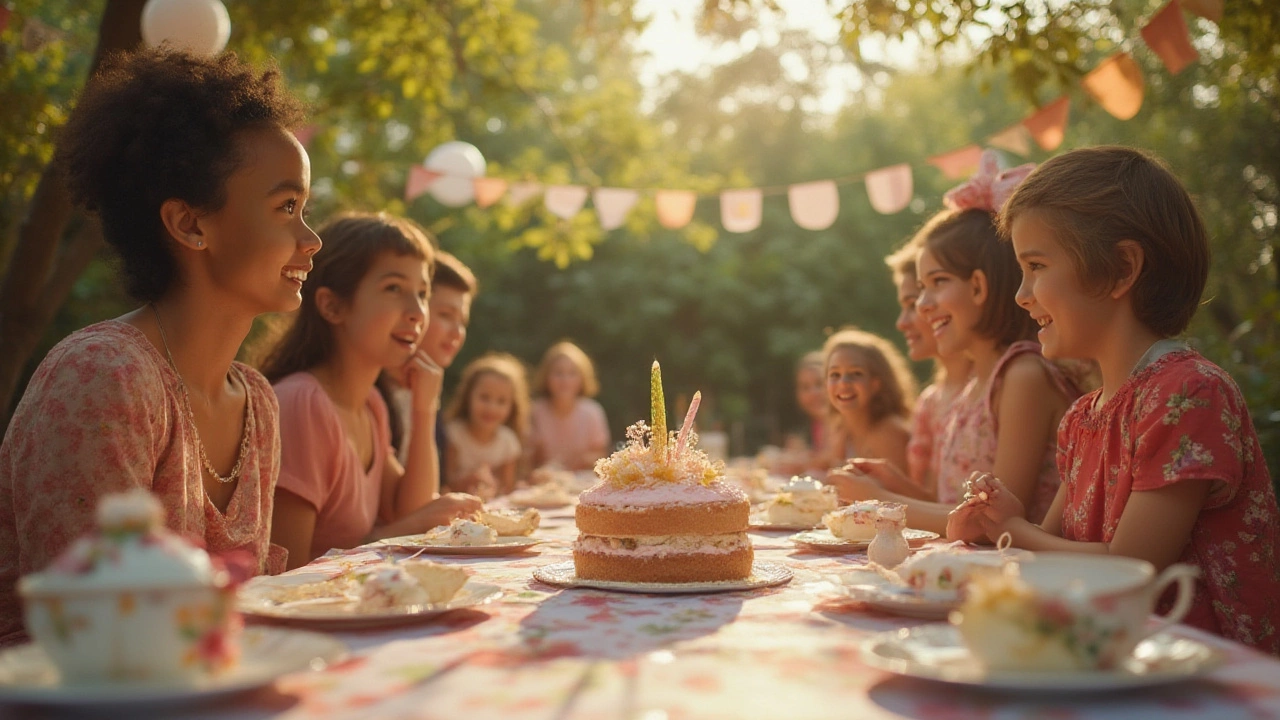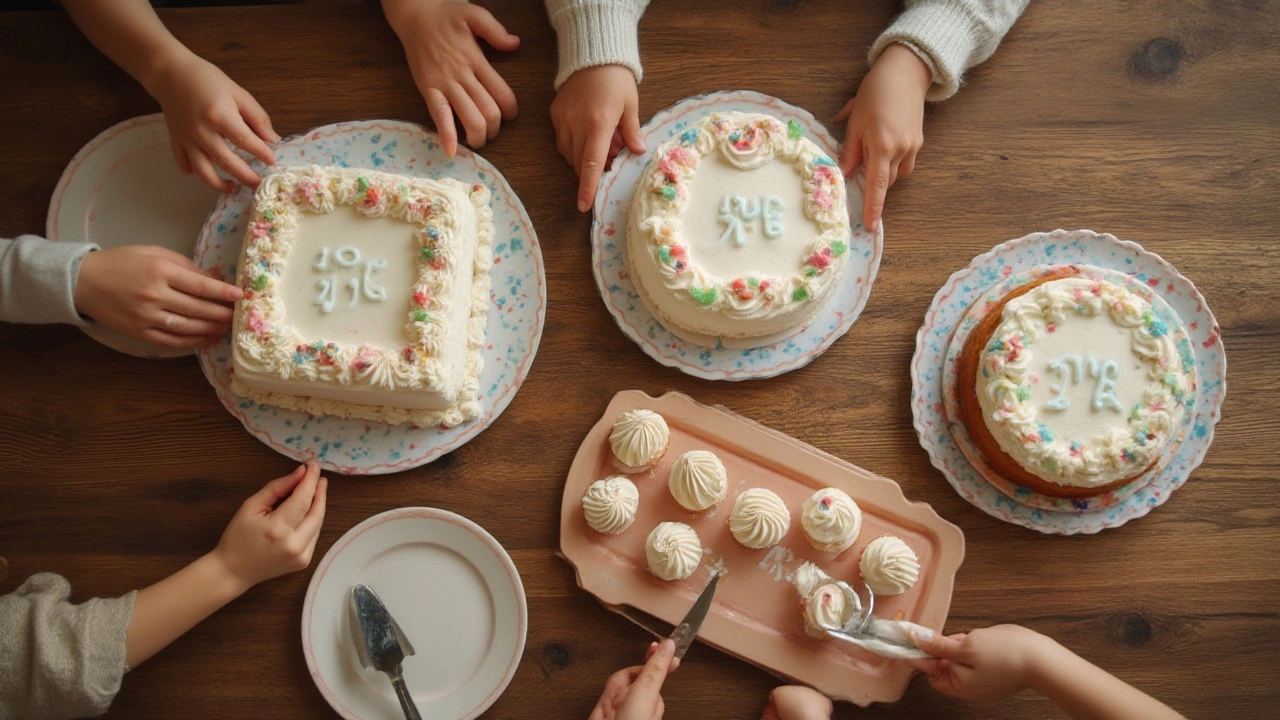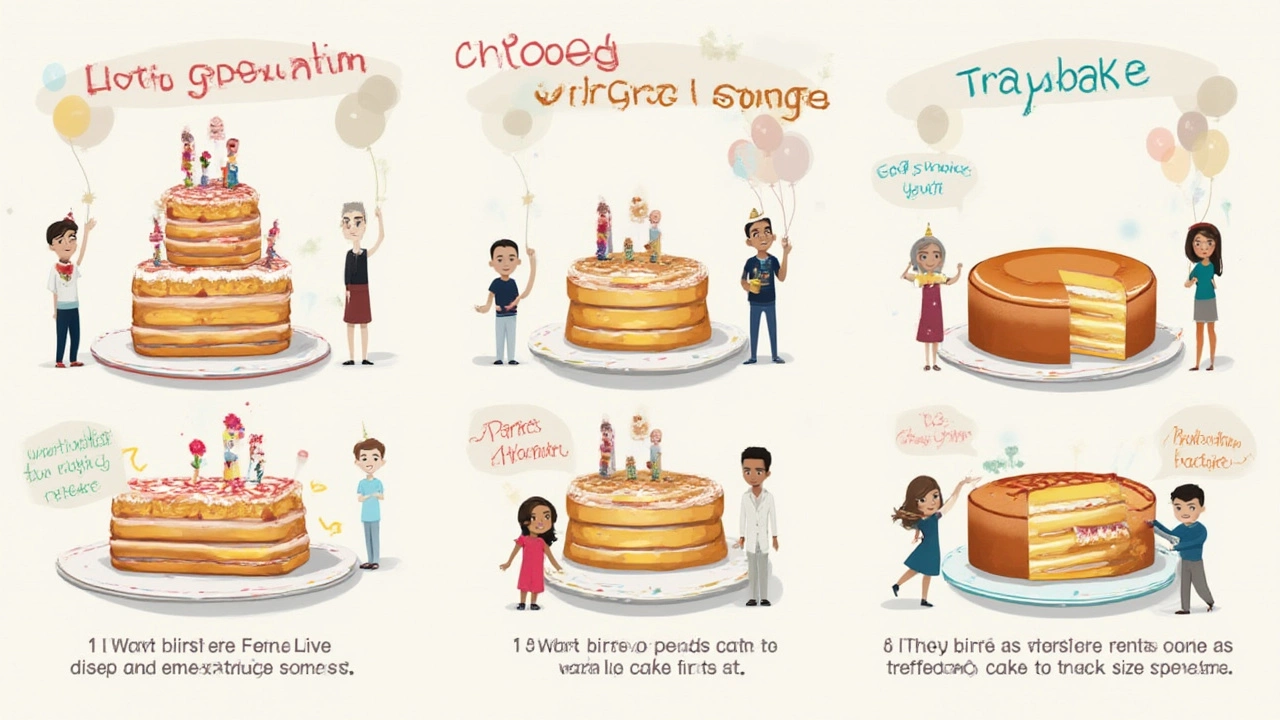
Picture this: heaps of giggling kids, paper hats slightly askew, a table heaving with snacks, and then—the grand entrance of a birthday cake. Someone leans in, slicing the first generous piece, and only then does the panic hit: is it enough for everyone? That dreaded moment when the last few guests are left eyeing the crumble is surprisingly common. So, what really is the most popular birthday cake size, and why does it matter more than you think?
The Classic Round Cake Size: Still the Champion?
If you’ve ever peeked into a British bakery on a Saturday morning, you'll catch the familiar sight of 8-inch round cakes sitting front and centre. For good reason, this classic size remains the gold standard for birthdays. The 8-inch diameter isn’t a random choice—it's a sweet spot between ‘not too small’ and ‘not outrageously big’. Slicing it yields about 10 to 14 modest portions, perfect for the average family party or a gathering of close friends.
You might think, "That’s not enough for my crowd!" Well, jump up to a 9-inch round and you comfortably feed about 16 people, depending on how ambitious those slices are. A decade ago, cakes at British birthdays tended to be smaller, but rising guest lists (and, let’s face it, our increased enthusiasm for dessert) at children’s parties in Bristol and beyond shifted the trend upwards. But still—the 8-inch is king. It’s also the size most cake tins are made for, so even home bakers stumble upon this standard without much thought.
Remember, a cake’s height also plays a part. Today, bakers love stacking cakes a little higher, making those 8 inches offer a bit more in the slice without bulking up the diameter. Cakes looking taller means even smaller slices feel generous. This choice is seen both in fancy shops and supermarket bakery aisles across the UK.
Here’s a quick look at how round cake sizes stack up for easy comparison:
| Diameter (inches) | Approx. Servings |
|---|---|
| 6 | 8-10 |
| 8 | 12-16 |
| 9 | 16-22 |
| 10 | 20-28 |
Planning a casual adult birthday tea or a small kid’s party? The 8-inch fits the bill for both, so you’ll rarely go wrong choosing it. But—if you expect unexpected guests (think neighbour’s kids or that one uncle who always turns up), sizing up gives you peace of mind. Leftovers never hurt!
Sheet Cakes vs. Layered Cakes: Does Shape Matter?
Now, before you sprint off to order a round cake, let’s talk shapes. Over the last five years, there’s been a revival of the humble sheet cake—think those rectangular slabs you might remember from school or office birthdays. They aren’t just easier to slice; they’re also easier on the wallet when feeding a crowd. If you’re baking or buying for a group of 25 or more, or want fuss-free cutting, the 9x13-inch rectangular pan is your friend. That single layer stretches to 24 sizable pieces—more if you cut carefully.
Layered cakes, with their multiple tiers, are perfect if you’re after a showstopper. But remember, they can be tricky to assemble and slice neatly, especially if you’re not used to wielding a baker’s knife. Sheet cakes tend to be more practical, especially for large children’s parties where little ones are more interested in icing and toppings than the artistry of a tall tiered cake.
Curious about which is more popular these days? Supermarket trends and orders from online cake shops in 2024 show round cakes still lead for birthdays by a landslide—about 65% of orders, compared to 28% for sheet cakes and a slim 7% for novelty shapes. But if you’re after cost per bite, sheet cakes win out. They pack in more servings, and the flat top is a blank canvas for creative decorations or personalised messages. Do you want fuss-free serving or a photogenic centrepiece? That’s really the deciding factor.
Cake shops from Bristol to Edinburgh report that rectangular sheet cakes see a spike in summer, when birthday parties move outdoors and people want less fussy, finger-friendly slices. They’re also easier to store (just pop the lid on the pan), so nothing goes stale if you save a chunk for tea the next day.

Factors Affecting Your Ideal Cake Size
You’ve picked the style. Now, how do you decide what size to get? It comes down to more than the number of guests. Here’s a list of real-world tips to zero in on the right size:
- Appetite Levels: Kids tend to go for smaller slices, adults might take seconds. If you’re serving a meal, a lighter portion per person is fine. If the cake’s the only star, size up!
- Other Desserts: Serving pudding or ice cream? You can shave a centimetre or two off those slices. But if cake is the grand finale, bigger is better.
- Decorations: Bigger cakes (10-inch rounds or large rectangles) allow more elaborate designs. For something like rainbow layers, you’ll need a little extra height—so even a ‘smaller’ cake can look impressive.
- Box and Freezer Space: Oversized cakes are fun till you try to fit them in the fridge or transport them by bike through city traffic. Been there, regretted it. Plan ahead!
- Leftovers: Love next-day cake with your morning coffee? Choose up. But if you can’t stand the thought of stale crumbs, stay conservative and serve every crumb.
Want an ultra-easy formula? Count your guests, add 2-3 (because someone’s always ‘just stopping by’), and use this simple chart:
| Number of Guests | Suggested Cake Size |
|---|---|
| 8-12 | 8-inch round / single 9x9-inch sheet |
| 14-20 | 9-inch round / 9x13-inch sheet |
| 25+ | 10-inch round / double-layer 9x13-inch sheet or two cakes |
Of course, if you’re hosting a group with a sweet tooth or kids who like ‘just one more bit,’ always err on the side of generosity. Better a few extra slices than an awkward scramble for the last crumb.
Popular Cake Sizes Around the World: Are We Missing Out?
It’s funny—cake size isn’t just a numbers game; it’s cultural. In the UK, the 8-inch round is legendary. But hop over to the US, and you’ll spot the 9x13-inch rectangular sheet ruling most children’s birthdays. Meanwhile, in France, elegant layered cakes (gâteau) often come in bafflingly petite sizes, designed for just 6-8 slices—perfect for an intimate gathering, but a nightmare if you’ve invited the whole football club.
Interestingly, in Japan, whole cakes are often smaller—5-6 inches across—but fabulously tall, for that wow-factor when sliced. They rely on plenty of filling and fruit, making each piece feel delicate and special. In Australia, the trend is towards big round cakes, often 10-12 inches, as the barbecue party crowd tends to sprawl.
Global bakery chains have picked up on this, offering a mind-boggling array of ‘standard’ cake sizes, from petite 4-inch ‘celebration cakes’ to whopping 14-inch multi-tier monsters for milestone birthdays. Yet, despite all the options, the old faithful 8-inch round prevails here in Britain—sturdy, easy to store, perfectly portioned.
A quirky trend worth noticing? Cupcake towers instead of traditional cakes. Technically, these deviate from the ‘cake size’ question, but a standard 24-cupcake tower covers the same number of nibblers as an 8-inch cake, with way less need for slicing skills. Some Bristol schools now favour cupcakes purely for their ‘grab and go’ appeal.
If you’re planning to wow your guests with a cake style from abroad, remember to adjust portion expectations—nobody wants to leave hungry, or worse, to witness a slice-and-serve disaster at the party table.

Tips to Nail the Perfect Birthday Cake Size Every Time
Picking out the ideal birthday cake size can feel like threading a needle, but there are some trusted tricks to make it effortless. Here’s how locals here in Bristol (and sly hosts across the UK) get it right:
- Ask guests early if they want cake—seriously, some only show up for a slice, others always say “oh, none for me”.
- Err on the side of generous. Leftover cake freezes like a dream—just wrap slices in parchment and pop them in the freezer.
- If there’s a mix of guests (children and adults), assume 1.5 slices per person. You’ll rarely miscalculate.
- Use a cake portion chart for specifics—don’t just eyeball it unless you’re a pro. Marriage of science and cake art!
- Consider double-layer cakes for a more impressive cut, without needing to up the diameter.
- Avoid cakes over 12 inches if you’re short on storage. And if you do crave spectacle, consider two smaller cakes for presentation and practicality.
- Don’t forget accessibility: tall cakes can be tough for little hands, so keep it kid-friendly if you’re hosting children.
For bakers wanting precision, there’s now smart kitchen tech—digital scales and cake calculators help you down to the gram (or crumb). Still, nothing beats chatting to a local bakery—they know exactly what works for the size of your party and how many teeny party hats will fit around each slice.
At the end of the day, the best birthday cake size is the one that brings grins and leaves nobody empty-handed. Preferably with just enough left over for a sneaky midnight snack.